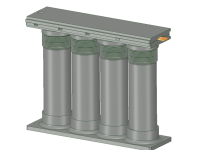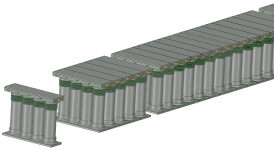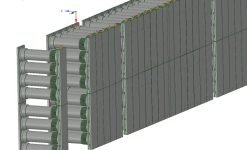stan.distortion
1 kW
- Joined
- Jun 12, 2019
- Messages
- 377
They get used a lot and there's a lot of info on improving the quality but they're rarely much good, the overhangs just don't suit 3d printing. Running a tap and die through works well though, I'll often do smaller sizes to the tapping bore, never had any strip at a depth of around 2x the dia but it's usually easier to use self tappers, they work very well but I'll usually print a square hole, seems to help avoid splitting and can be printed at any angle.
Printing larger thread sizes with a lead to get the tap or die started can work ok too but in general large printed threads are a last resort imo, if it wont work with wood then it probably wont work all that well with 3d printing.
Automotive clips and fasteners can be a good source of ideas for alternative methods and ratchets can work surprisingly well if the layers can be lined up correctly, I'd done some recently with 10mm x 3mm strips, only spring loaded (split at the ends with the teeth on the narrow edges, not self tightening), didn't get a really good shape on the teeth but it still took something like 12kg to pull them apart.
Printing larger thread sizes with a lead to get the tap or die started can work ok too but in general large printed threads are a last resort imo, if it wont work with wood then it probably wont work all that well with 3d printing.
Automotive clips and fasteners can be a good source of ideas for alternative methods and ratchets can work surprisingly well if the layers can be lined up correctly, I'd done some recently with 10mm x 3mm strips, only spring loaded (split at the ends with the teeth on the narrow edges, not self tightening), didn't get a really good shape on the teeth but it still took something like 12kg to pull them apart.






